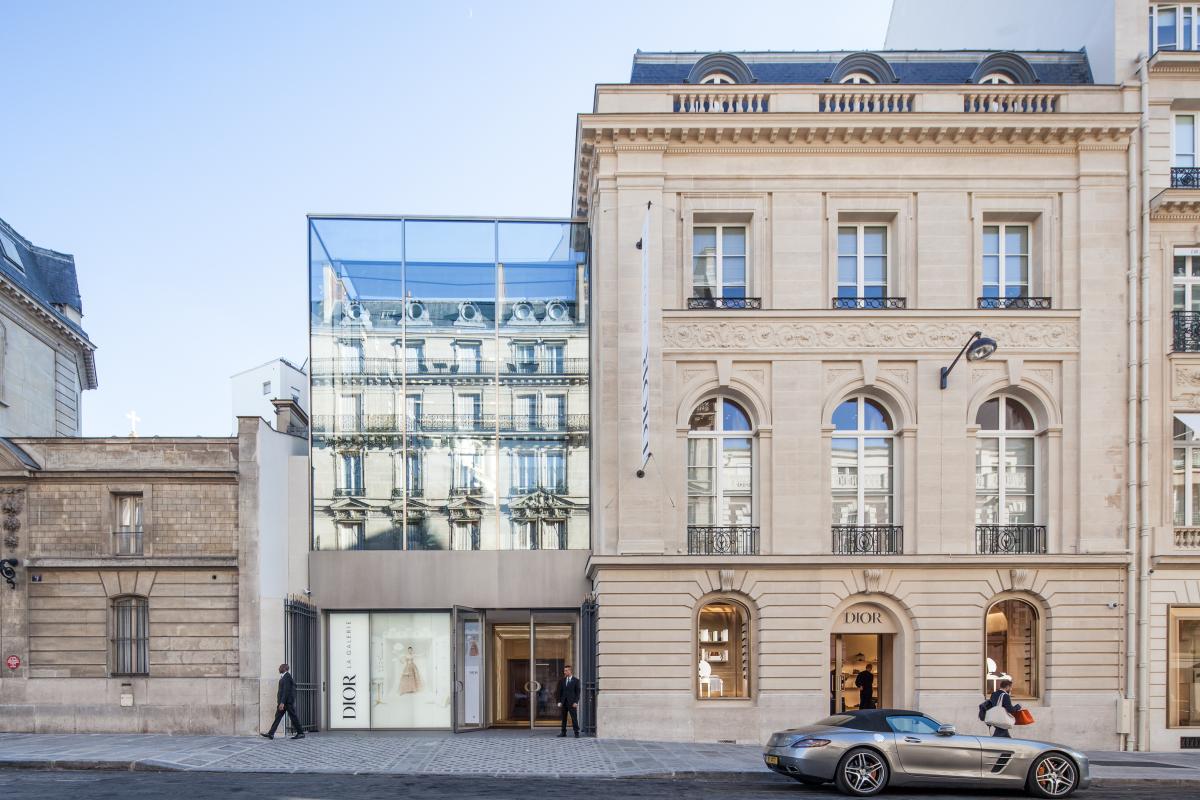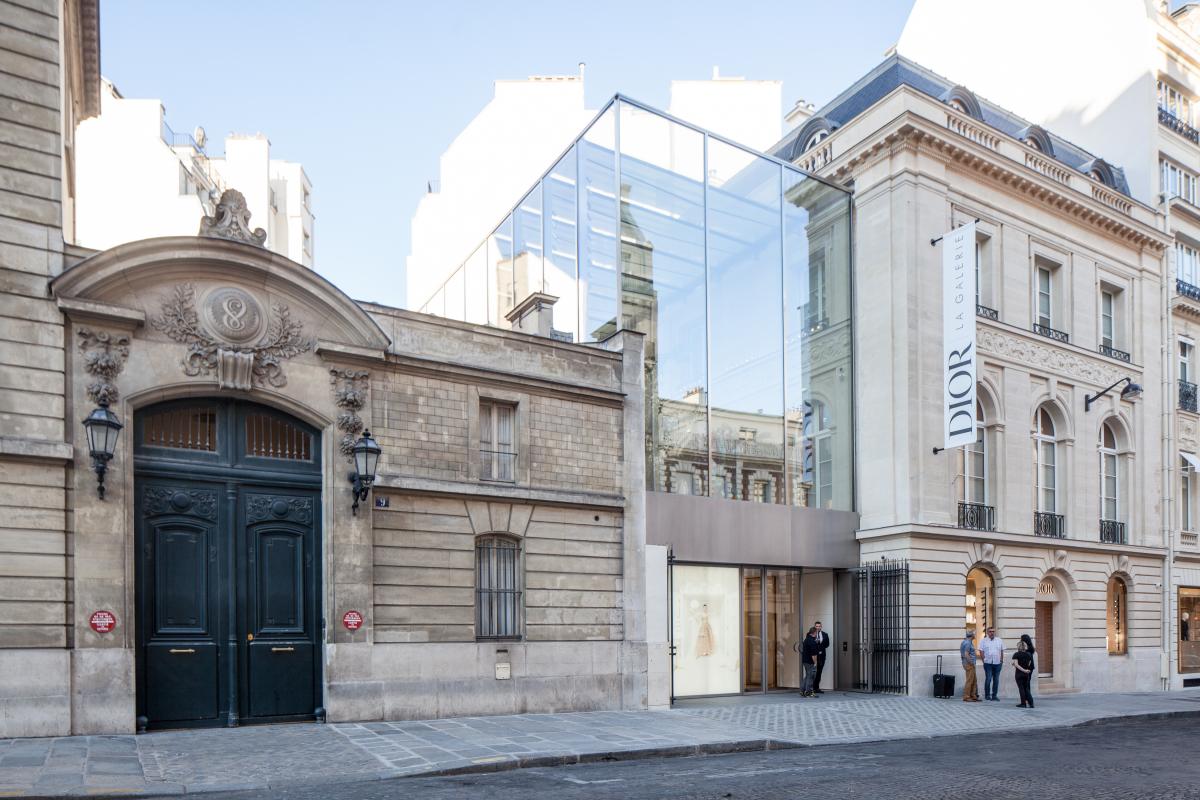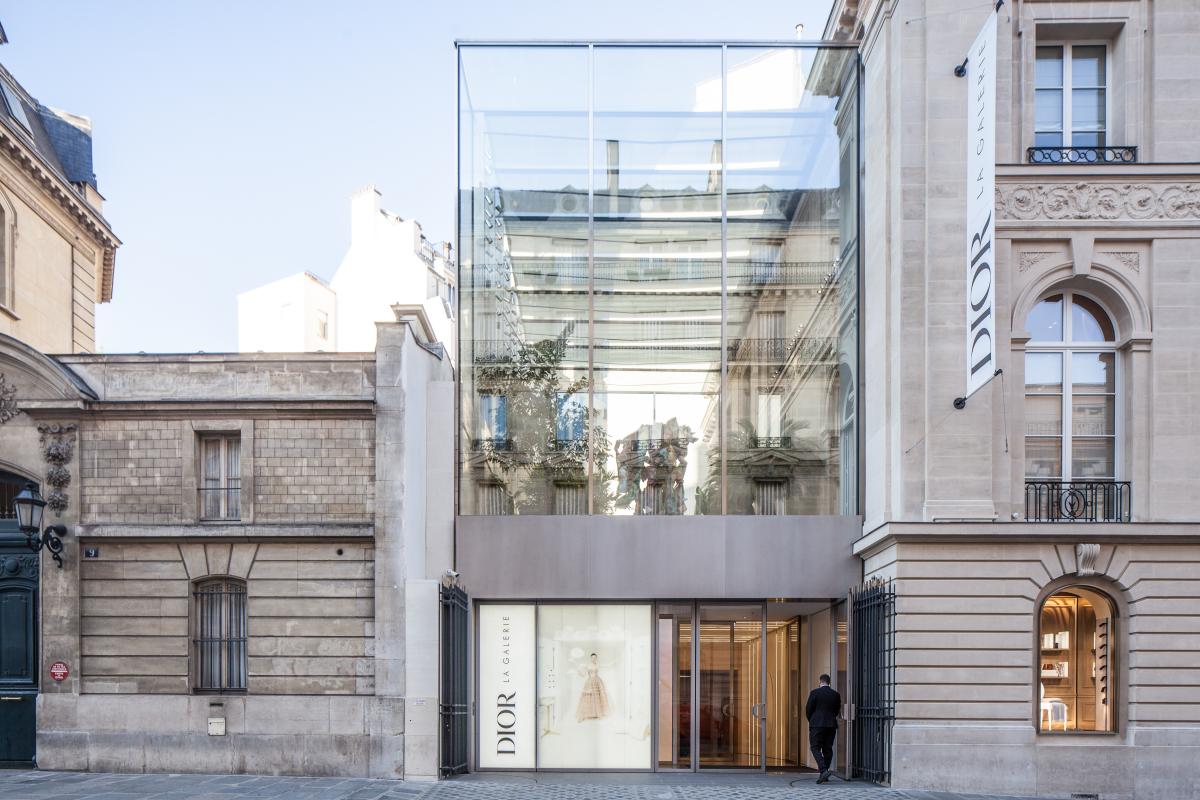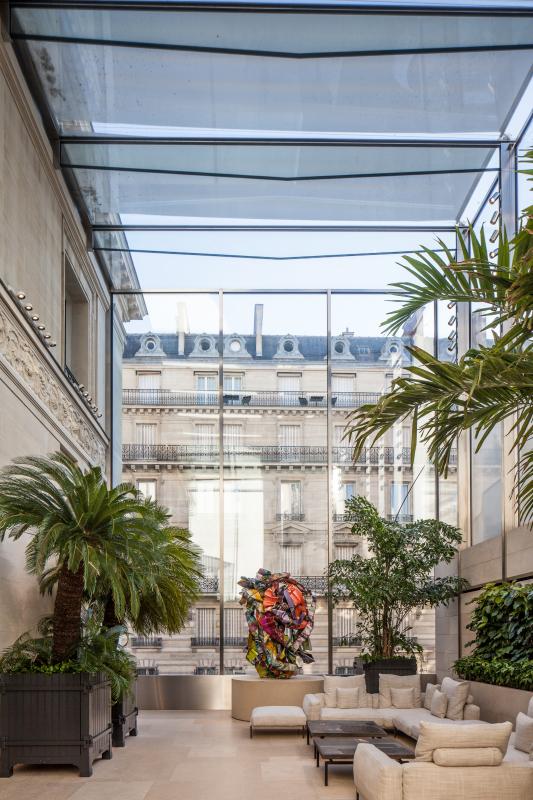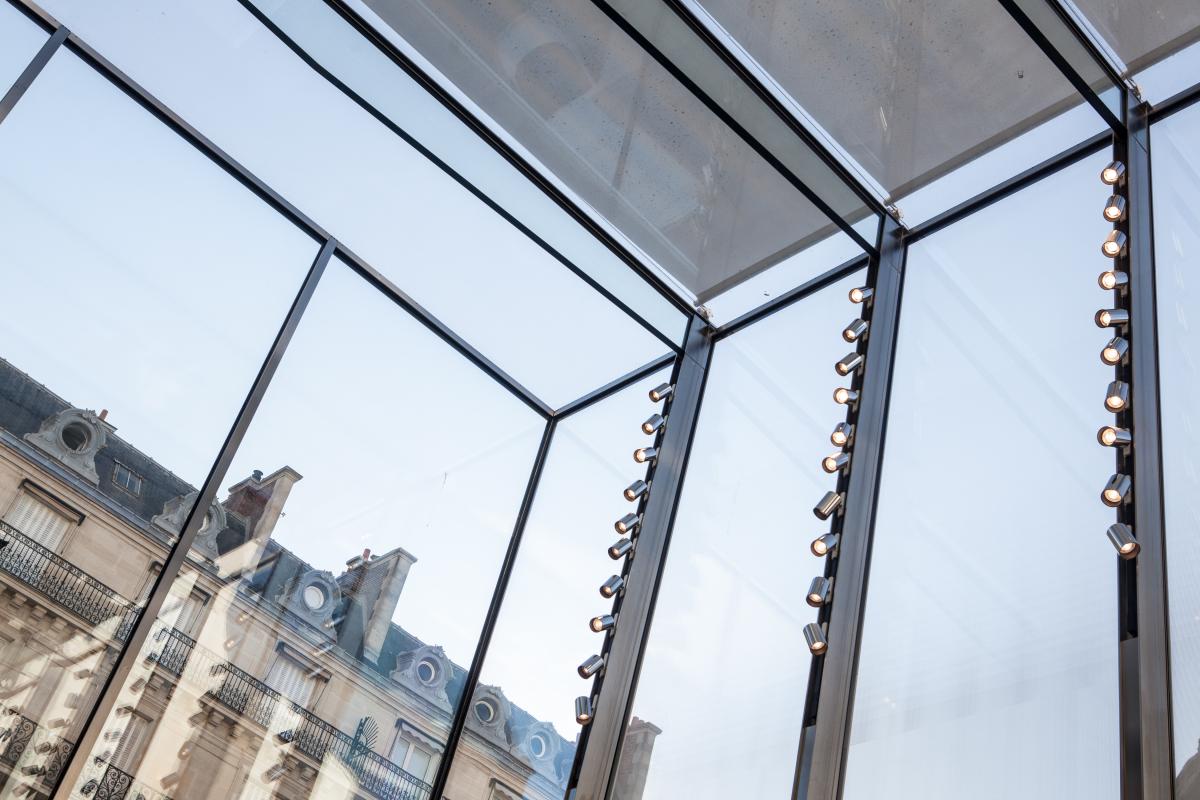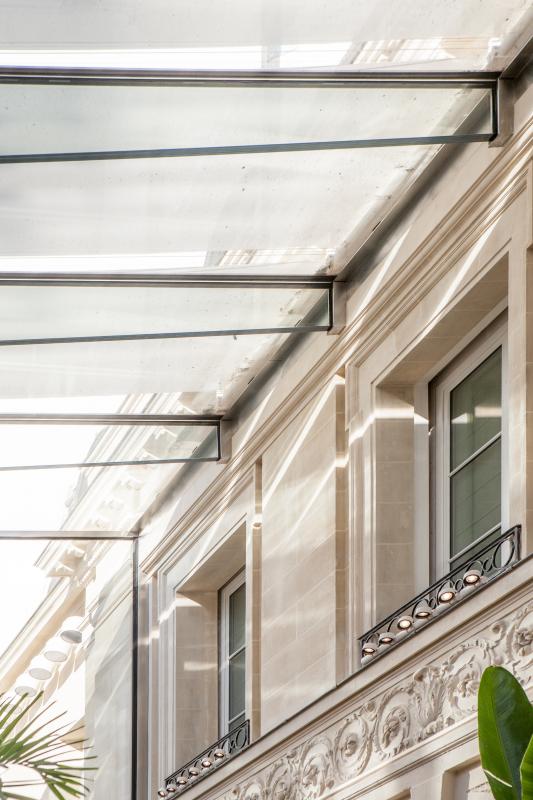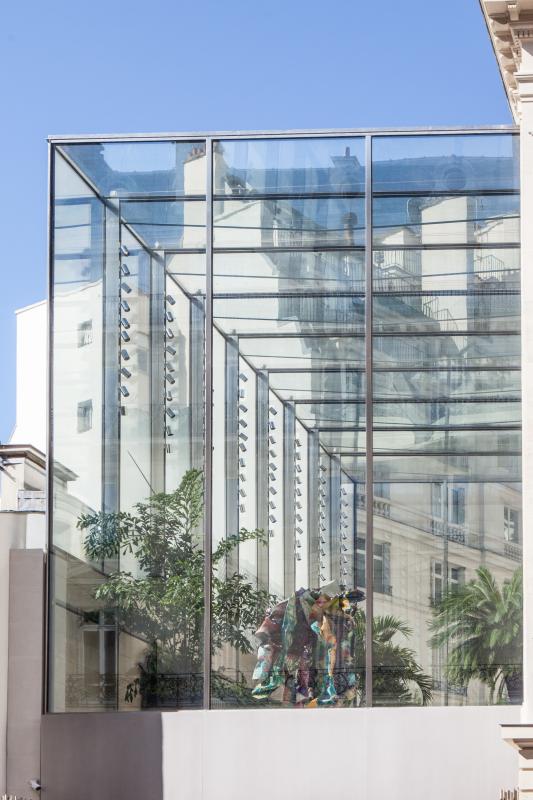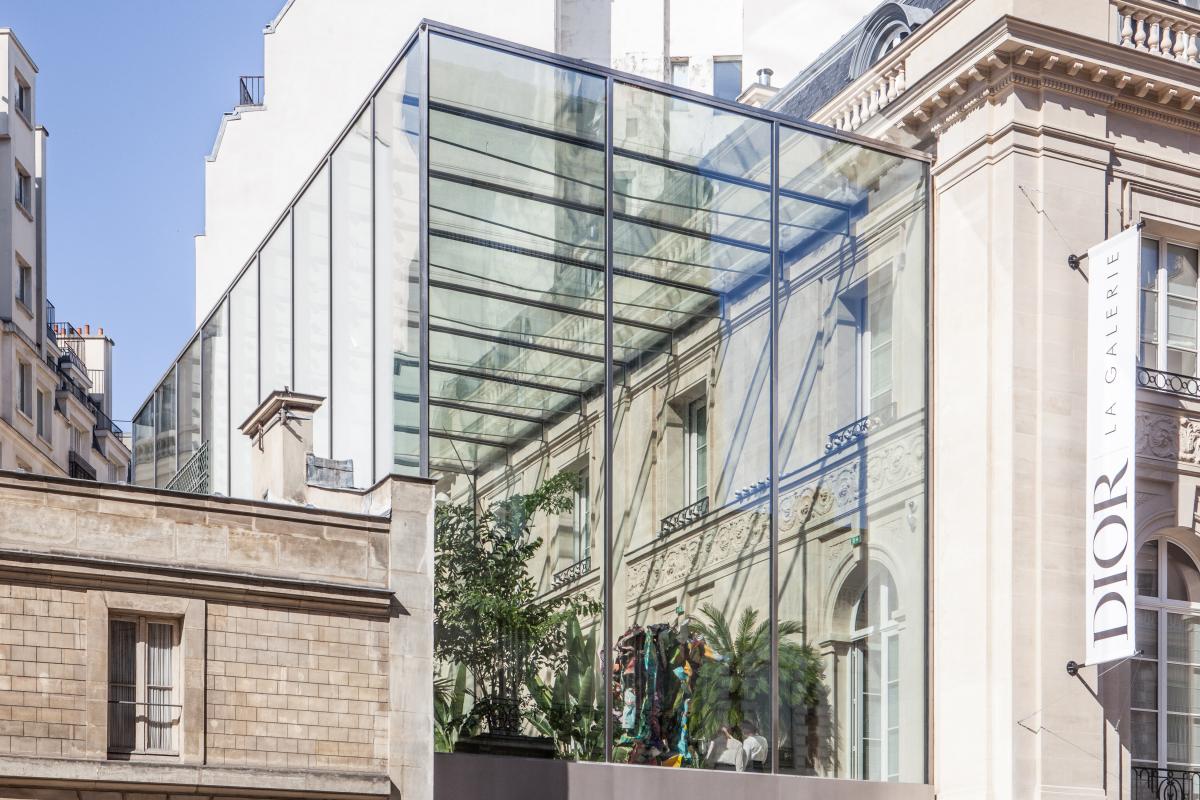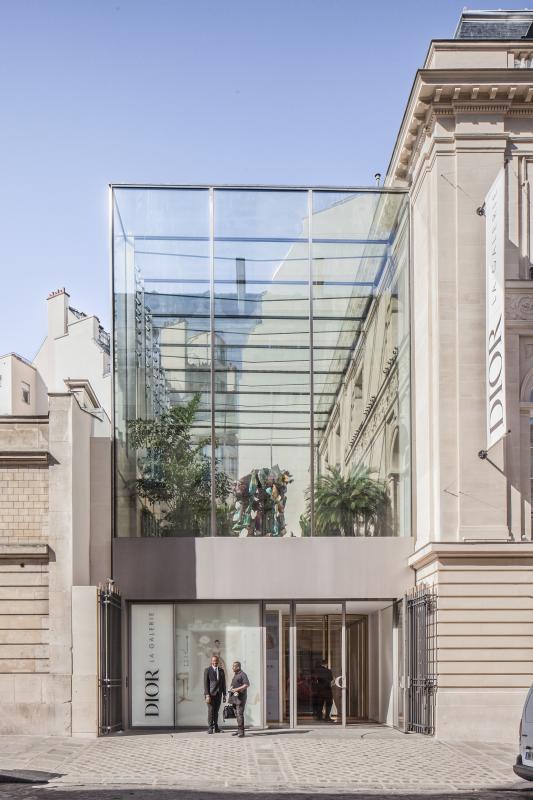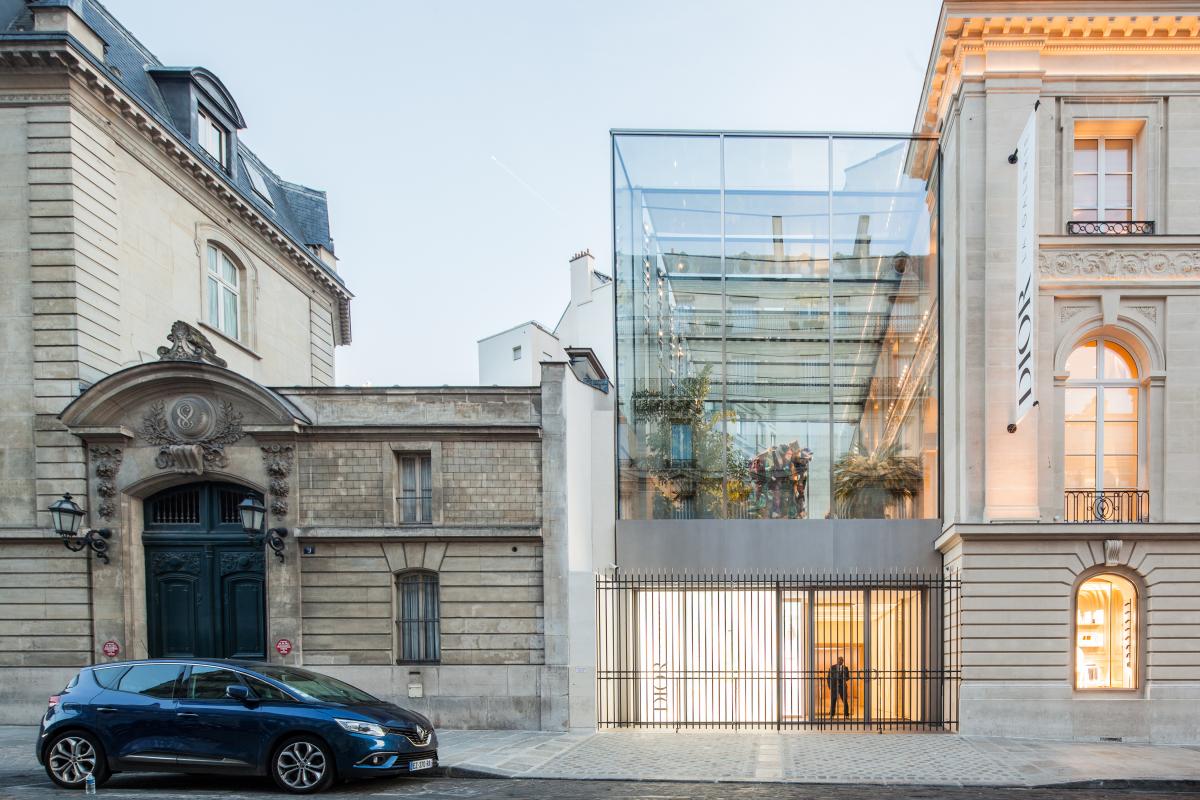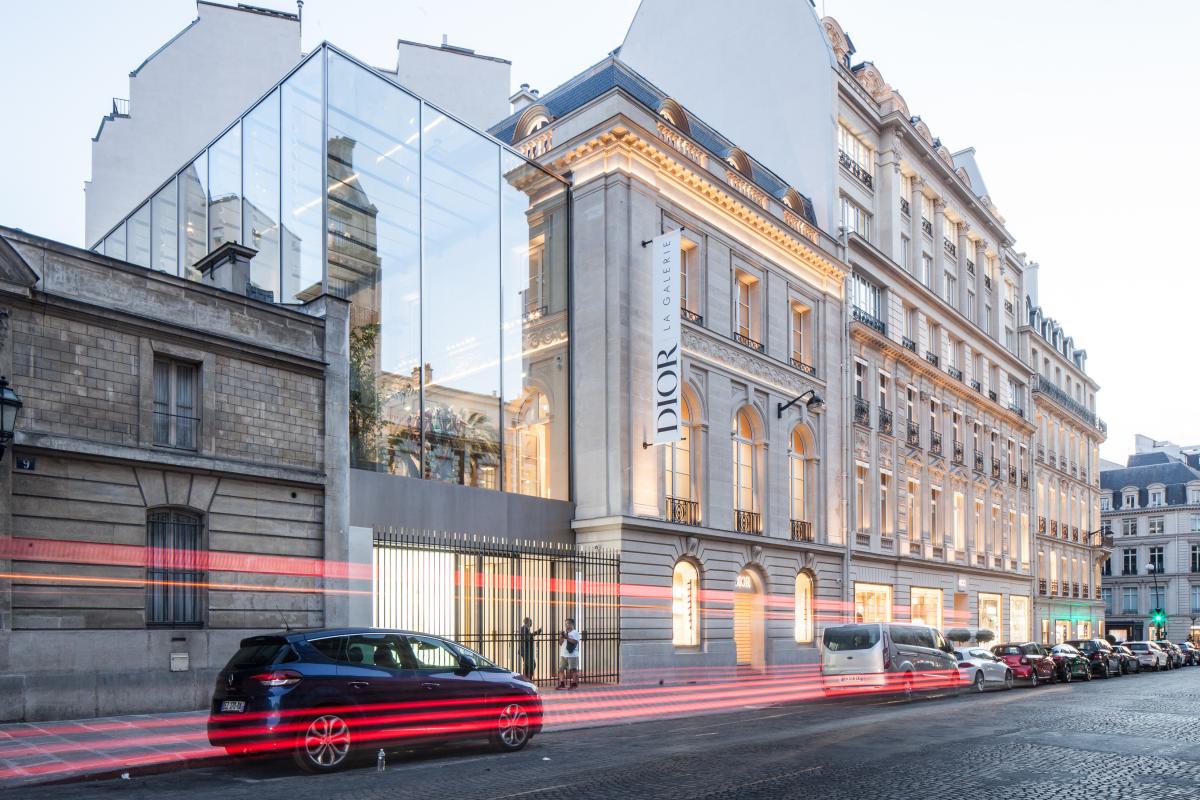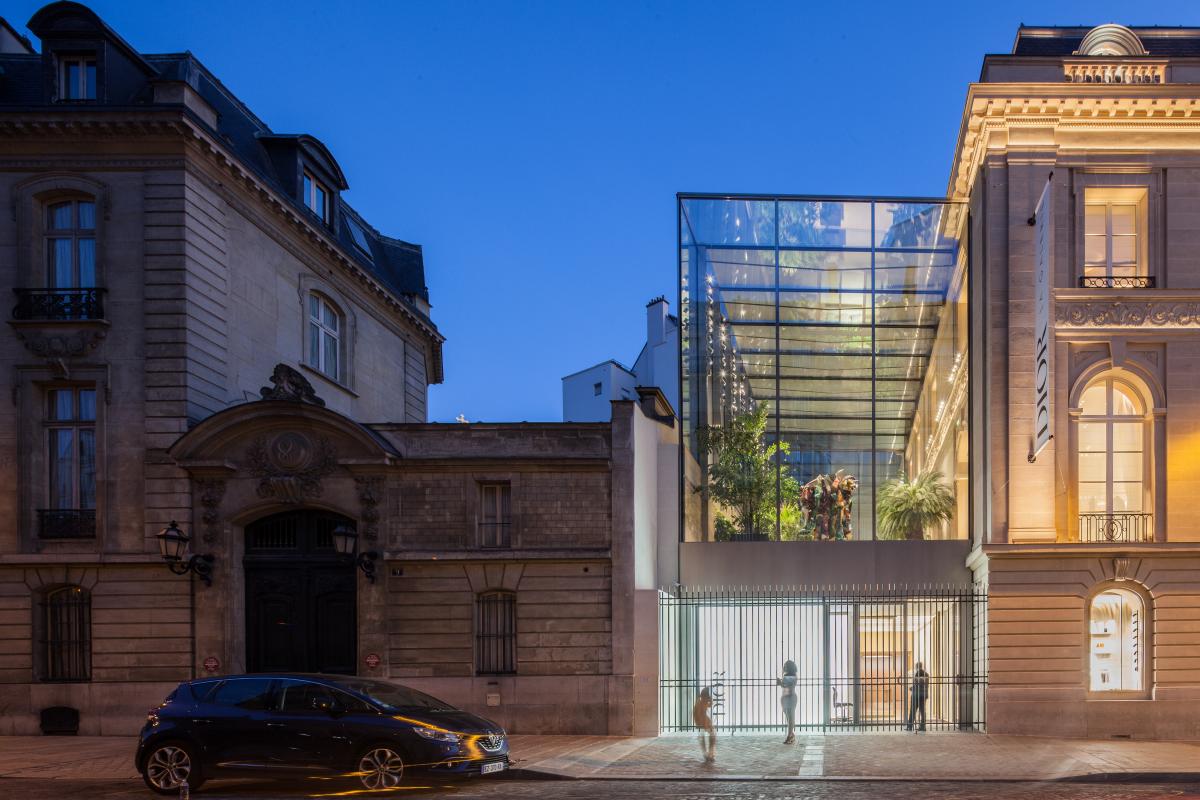Christian Dior - 30 Montaigne
Renovation and transformation of the Dior mansion, Avenue Montaigne
The historic home of the illustrious Christian Dior fashion house, 30 Avenue Montaigne, has undergone a major renovation to update the image of this iconic address while enhancing its architectural heritage. The aim was to restore the entire group of buildings, dating from the second half of the 19th century and originally composed of five freestanding buildings, optimizing the links between these different buildings, developing the sales spaces, and enhancing the visitor experience. The project also sets out to improve the building’s thermal and energy performance.
As well as these primary considerations, the project also embraces a daring vision, integrating an entirely new space – the ‘Winter Garden’ – specially designed for the store. The Winter Garden distinguishes itself as being the only contemporary element visible from the exterior, thereby representing the architectural ambition behind the whole project.
T/E/S/S was responsible for the design and supervision of three glass roofs, including the Winter Garden, as well as the glass floor that gives visitors a novel view of the historic fitting room from the level of Monsieur Dior’s office.
Given the historic importance of the existing facades, the extension formed by the Winter Garden minimizes structural interfaces with the existing building. A structure almost entirely in glass with minimalist connection details has been designed for maximum transparency. The project makes innovative use of structural glass and structural silicone joints, nonetheless ensuring a high level of solidity to offset any risk of failure in the joints or glazing.
The Winter Garden is composed of four glazed facades: the roof, two gables, and the long facade on the south-east side. The roof and long facade are composed of nine frames of double glazing, supported by eight glass beams of variable inertia and eight double stainless-steel RSJs. The north-east facade, on Rue François 1er, is composed of three self-supporting panels of double glazing, each measuring approximately 2.4m × 9m and weighing around 3,200 kg. The south-west facade is composed of three 6.4m-high panels, held vertically by a stainless-steel frame. The glazing functions as a diaphragm to stabilize the glazed box by means of its structural silicone joints.
The panels of structural glass make up the envelope of the Winter Garden. Solar screening was defined in collaboration with the environmental engineers. It consists of a layer of solar screening, as well as large blinds on motorized cables fitted vertically and concealed behind stone cladding, or horizontally on the glass roof.

